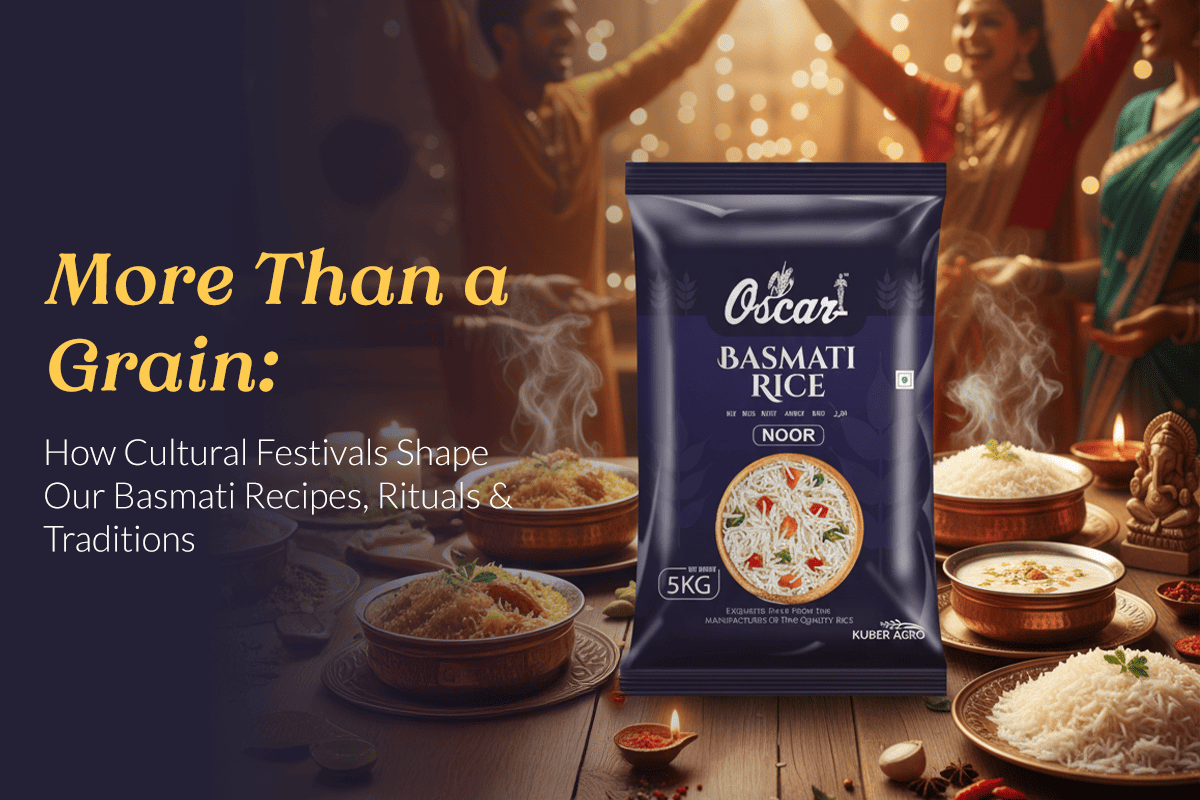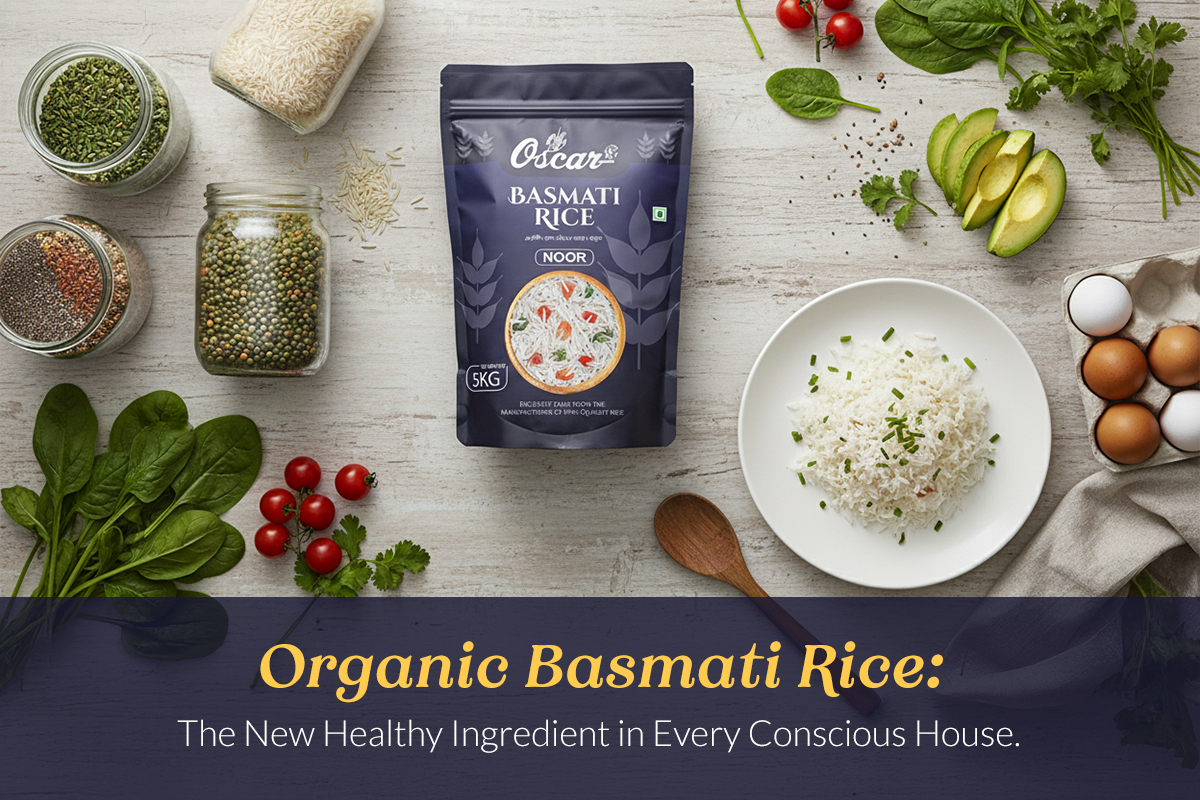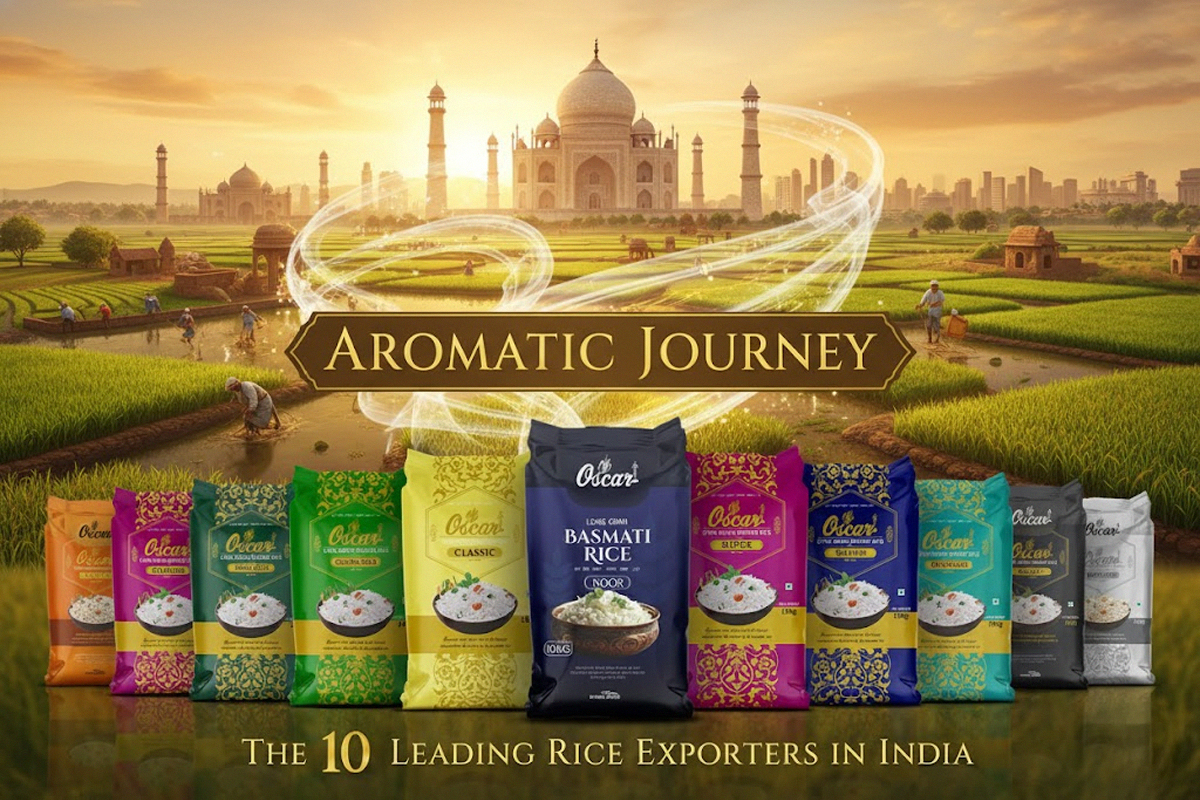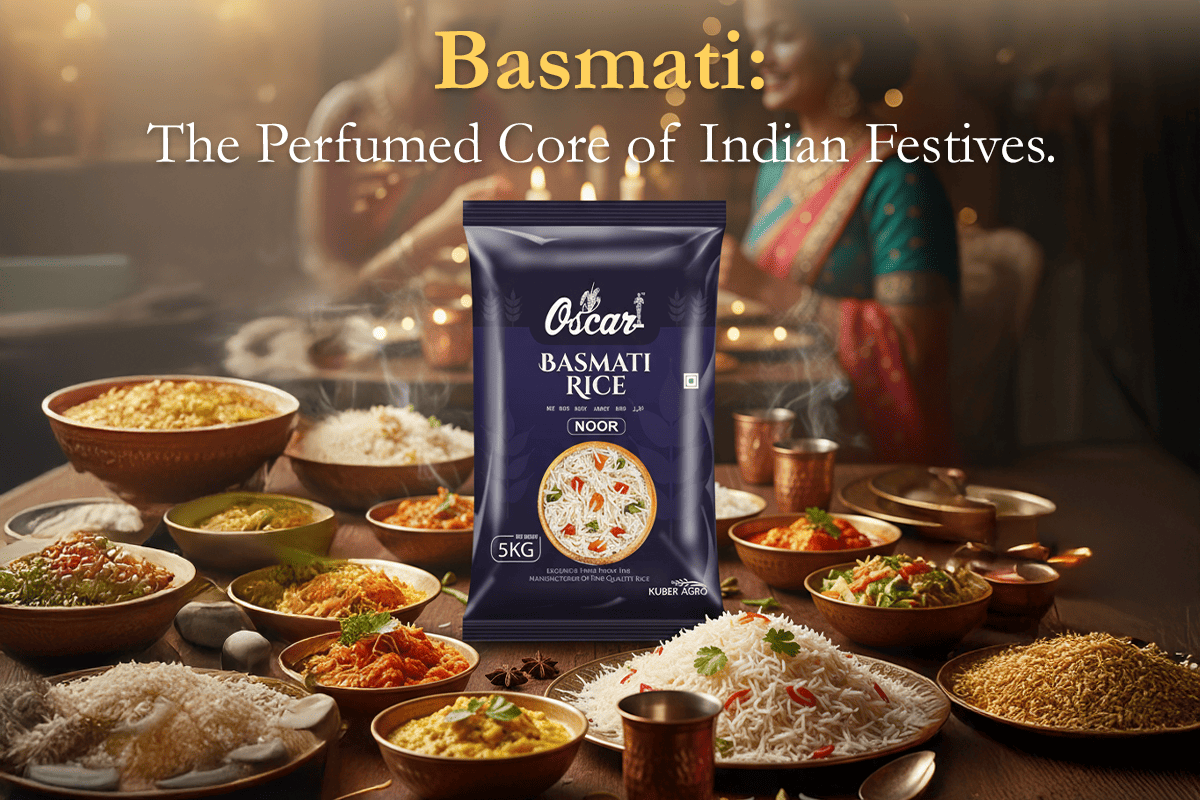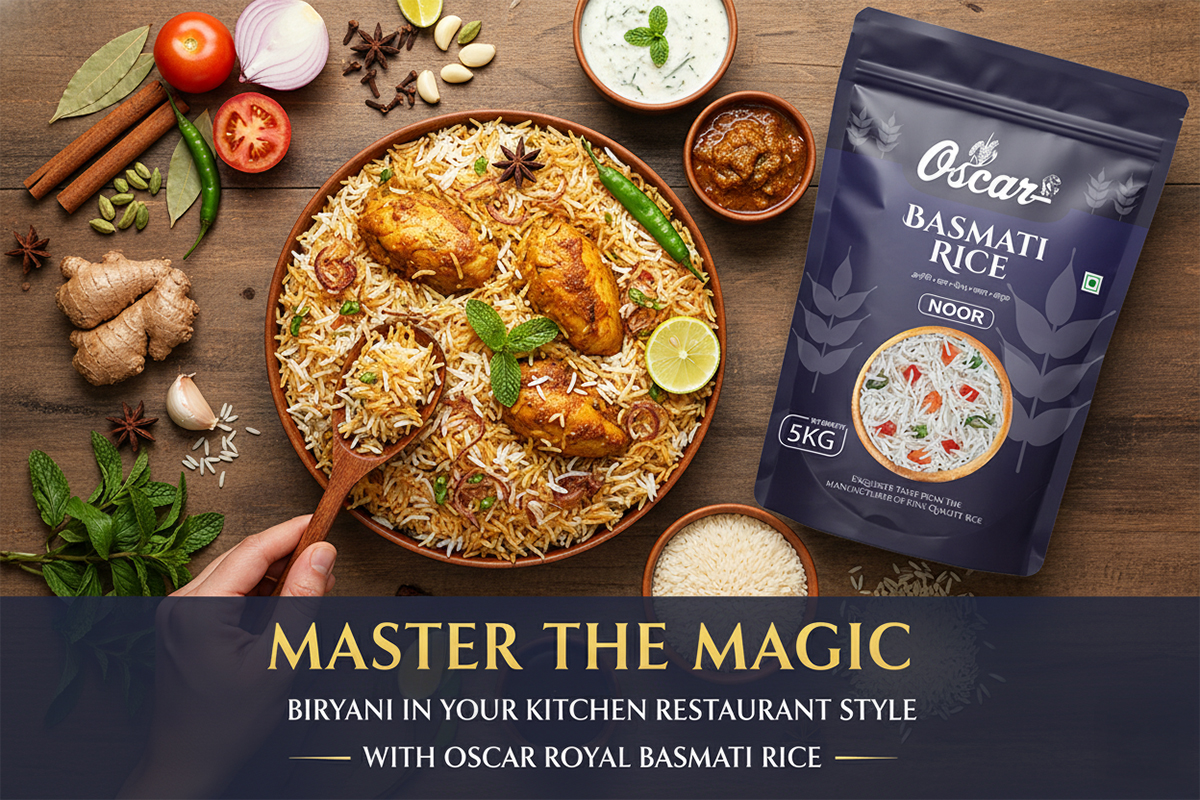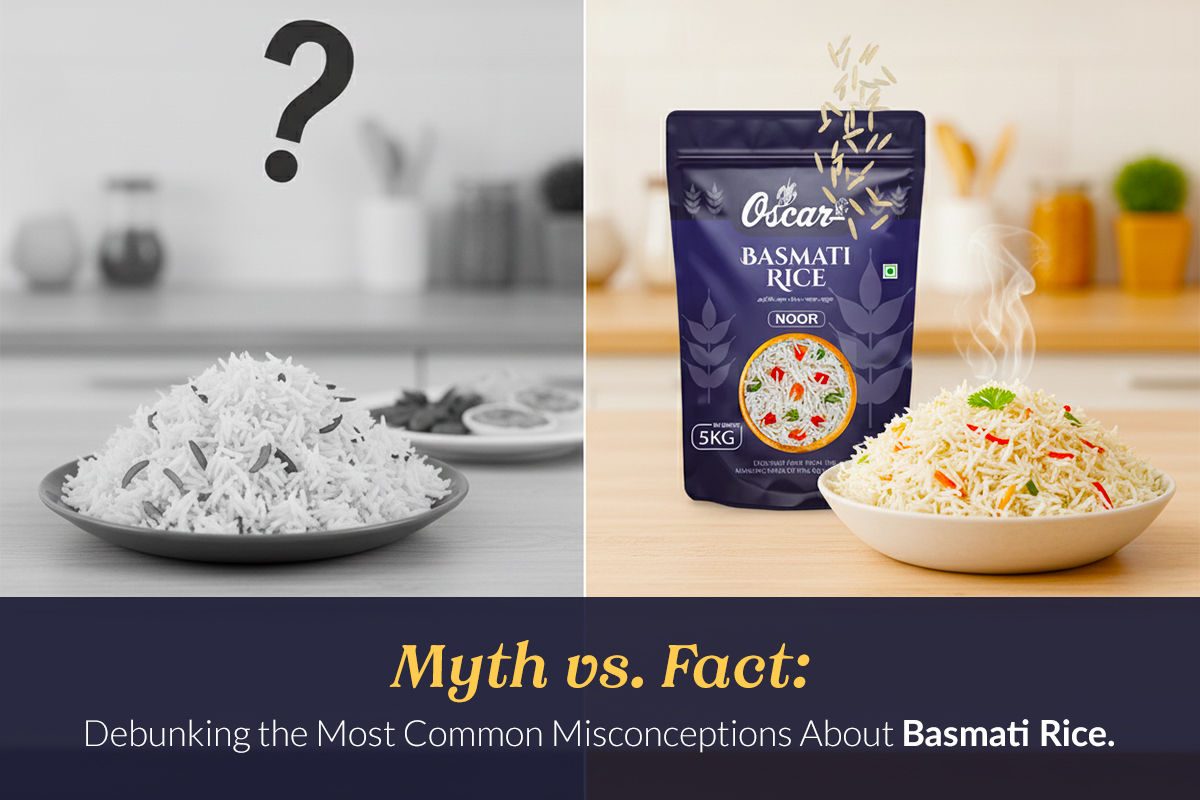More Than a Grain: How Cultural Festivals Shape Our Basmati Recipes, Rituals & Traditions
As soon as the day of the festival comes, the air changes, right? Our thoughts are not going to decorations and gifts but directly to the kitchen. To us, and to millions of other citizens of the planet, the smell of celebration is the indisputable, buttery, nutty aroma of cooked Basmati rice prepared to perfection. It is not a grain; it is an under-thread, which has been pulled through the warp and woof of our heritage. In our opinion, all good stories that are told at a party begin with a bowl of hot Noor Basmati Rice.
We have been expanding upon and researching food culture, and the link between cultural festivals and our Swadisht Basmati rice is one of the most significant things that we have come across. It is more than mere consumption. It is identity, memory, and the beautiful, involved system of chef secret rice rituals and traditions that have been passed down families. We will now enter into the manner of how this fine grain changes our feasts of revelation and why it has so exalted a place in our hearts.
The Spice of the Feast: The Aroma of Basmati Rules.
Why, come to think of it, when we have the greatest of our cultural festivals, do we automatically grab long grain Basmati rice? It is simple to understand: quality is the determinant of memory. The long-grain marvel has exceptional features—its unbelievable length, the non-sticky nature, and, above all, the trademark aroma—make it negotiable when it comes to celebratory food preparation. You would not cook a classic, slow-roasted Hyderabadi Biryani with any rice; you will need the lift of fragrance that you can only get with an old Basmati chawal. It’s an ingredient of honor.
When we discuss creating an eventful festival meal, we are not merely seeking a carbohydrate; we are seeking a canvas on which to paint taste. The fact that classic Basmati rice can take in high amounts of spices without disintegrating is what makes it the ideal carrier of the highly stratified flavors that we associate with celebrations. It raises the whole meal to an experience.
A Flavor of Heritage: Classic Cultural Basmati Recipes.
Each of the major celebrations boasts of its golden cuisine, Basmati recipes, each of which contains a story of place, history, and family. It is a wonderful geography lesson!
- The Crown Jewel: Biryani on Special Events. Be it Eid, Diwali, or a wedding anniversary, the biryani is king. This is a layered, complicated dish, which is a work of heart and therefore needs a lot of preparation. The quality of the classic whole grain basmati rice is the key to the success of the recipe. Once you open the pot, when that grand aroma hits the house, then you realize that the party is underway. It is an all-encompassing affair, which makes the dining table a feast for the senses.
- Sweetness and Light: Kheer and Payasam. It’s not always about spice! Creamy, comforting sweets are the order of the day during many Basmati rice festivals. No family party is complete in my family without a luscious Kheer (rice pudding) spiced with cardamoms. The little grains of Basmati powder are gradually cooked in milk till they practically melt away, giving off their intangible smell and giving a soft touch of chewing that is simply heavenly. It is the best ending to a full festival meal, the one presupposing prosperity and sweetness in the coming year.
- The Simple Elegance of Pulao. The rice dish, typically a colorful pulao, is used in many of the cultural festivals of the harvest, such as Onam or Pongal, or even during more low-profile family functions. A good Khazana Basmati Pulao is studded with seasonal vegetables, nuts, or mild spices to let the natural flavor of rice shine through. It is the humblest but a very necessary item on the menu, sometimes used as a side dish to numerous curries, but it is a stand-alone example of fresh food and pure, unadulterated food preparation.
Invisible Ingredients: Rice Rituals and Traditions.
The most beautiful thing to us is the rules that have no official written records, the rice rituals and traditions, which occur before the fork touches the plate. It is these practices that actually make a festival meal not only human but also very personal.
We found a person who recalls being next to his grandmother as she cooked the rice. And it was not merely the washing of the grains; it was a rhythmic, half-meditative task. She washes the grains, checking them step by step and washing them thrice until the water is clear, and soaks them for 30 minutes. She also taught him that this was not a negotiable process, but it was a non-negotiable process that guaranteed the aromatic basmati rice to cook without any problems and apart. She used to say, always, that in case the rice is honored, the meal is blessed.
These are the actual ingredients of our cultural Basmati recipes, such as the care, the attention, and the generational handover.
It’s about:
- The Offering: Among most traditions, a small amount of the well-cooked rice is offered in prayer or offering or puja before anybody can eat the rice, in respect to the earth and harvest.
- The First Serve: It is a small ceremony of serving the elders or the latest member of the family first, which emphasizes the respect and familial origin.
- The Sharing: The final ritual is the common dinner. Whenever families assemble in Basmati rice festivals, food turns out to be the attraction, yet the dialogue and bondage are the gasoline. The smell takes us back to the days bygone, and the common table makes our current concrete.
It is these traditions that make an heirloom recipe not merely a list of ingredients, but to us it is a part of our family history. Our mother instructed us, and we are now instructing our children. It is a wonderful, physical connection with the generations who preceded us.
Cherishing the Legacy
But after all, the fact that food is never merely sustenance is proved by the fact that royal extra long grain basmati rice is married and that we have our own cultural festivals. It is a preserver of culture, a decoder of tradition, and a very potent memory aid. It is in the preparation and sharing of these precious cultural Basmati recipes that we preserve our history, make it lively, and, fortunately, sweetly fragrant.
The next time you are at a party and the aroma of the perfect Basmati is all around, do not simply eat it; you need to do so. Pause. This was thought of the thousands of years of tradition, the hundreds of miles it had covered, and the numerous numbers of hands that had prepared the meal. It is a wonderful heritage, and it is the one that we should keep on loving and bequeathing. Because when we transmit a recipe, we are not merely transmitting instructions; we are also transmitting love, respect, and a strong bond with our heritage.

